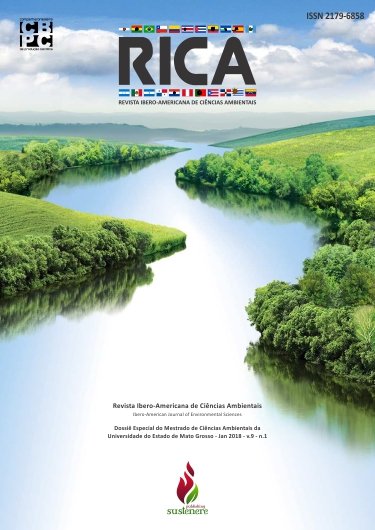Anti natural products - Helicobacter pylori: review
DOI:
https://doi.org/10.6008/CBPC2179-6858.2018.001.0005Keywords:
Helicobacter pylori, Natural Products, Antibacterial Activity, Honey, PropolisAbstract
Helicobacter. pylori infection is the most common chronic bacterial infection in the world, with an intrinsic relationship between health and the environment factors and it is considered a global public health problem, it has a high prevalence in developing countries. The use of natural products aimed at drug innovation increases the interest for new active principles based on natural products, however, the strong antibacterial activity is still controversial as to the minimum inhibitory concentration of these products, mainly in relation to H. pylori. However, the classification of the antibacterial activity is still controversial regarding the minimum inhibitory concentration, mainly in relation to H. pylori. This work carried out a systematic review of the natural products that have anti-Helicobacter pylori activity, using the Wang (2012) review about anti-H. pylori medicinal plants as a starting point , considering the minimum inhibitory concentration as the classification criterion. The search was maden in the online databases VHL, BDENF, LILACS, MEDLINE, PUBMED, Scielo, Bireme and ScienceDirect, using the descriptors: Helicobacter pylori, anti-Helicobacter pylori, natural products, antibacterial activity , propolis and honey. The search resulted in 138 articles, of which 59 were from the Wang review (2014) and other 79 were found in the databases, which provided an increase of 57 articles of medicinal plants, 12 articles of products other than medicinal plants (honey, propolis, yogurt and mushroom) and 10 articles from clinical and in vivo studies. 162 distinct natural products were found, most of them medicinal plants, in 128 articles. According to Wang's classification, only 16 of these natural products show strong activity, and most of them are fractions; 45 show strong-moderate activity, 37 moderate-weak and 30 weak activities. The new classification of natural products with anti-H. pylori activity proposed in this research presents 5 classes according to their minimum inhibitory concentration: products with strong, good, moderate, weak and no activity. According to this new classification, 43 natural products were classified as strong activity, which 19 are fractions and 24 are extracts, 40 products were classified as good activity, 18 moderate , 15 weak activity, and only 4 products as no activity. This review extended the classifications natural anti-Helicobacter pylori products by inclusion of new medicinal plants, animal products and clinical and preclinical studies. The new classification allowed the inclusion of other plant extracts, animal products and fungi with anti-Helicobacter pylori activity, and expanded the range of products considered with strong activity.
Downloads
Downloads
Published
Issue
Section
License
The CBPC - Companhia Brasileira de Produção Científica (Brazil CNPJ: 11.221.422/0001-03) the material rights of the published works. The rights relate to the publication of the work anywhere in the world, including rights to renewals, expansions and dissemination of the contribution, as well as other subsidiary rights. All electronically published works may subsequently be published in printed collections under the coordination of this company and / or its partners. The authors preserve the copyright, but are not allowed to publish the contribution in another medium, printed or digital, in Portuguese or in translation.









